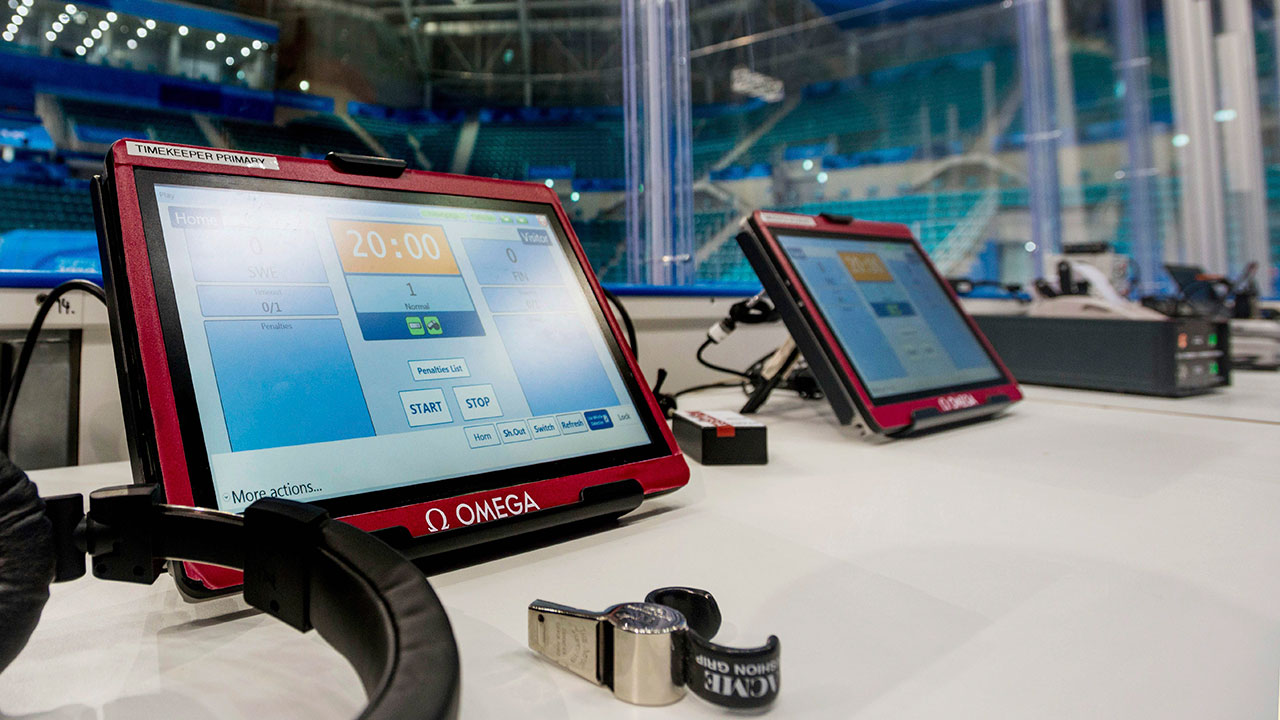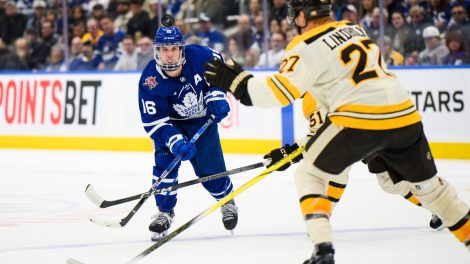Though the NHL abstained from allowing its on-ice elite to suit up for the 2018 Winter Olympics in Pyeongchang, the use of player-tracking technology at the Games means the league may still benefit from the international tournament in the end.
Omega Timing has partnered with the International Olympic Committee to provide tracking for the Olympic hockey tournament, according to the Associated Press’ Stephen Whyno, collecting and delivering data on “speed, acceleration, stopping, distance traveled, shift lengths and ice time.”
The tracking system relies on microchips in the back of players’ jerseys as well as cameras above the ice surface tracking puck movement, according to Whyno, while the referees are using digital whistles enabled to immediately stop the clock when blown.
Olympic squads don’t currently have access to the information on the bench, as NHL teams do via the newly implemented iPads, but player data is broadcast on screens in the arena and sent to teams for their own analysis.
However, Omega’s current setup could work within the NHL’s real-time system, potentially granting teams in-game access to tracking data.
“We’re able to measure the data, process it and distribute in less than 100 milliseconds,” Omega Timing CEO Alain Zobrist said to Whyno. “It might be a great tool for them to help their coaching.”
According to International Ice Hockey Federation general secretary Horst Lichtner, his organization and the NHL are open to exchanging ideas in regards to the new techonlogy. Zobrist also suggested Omega Timing has been in contact with the NHL about its tracking system, meaning the league could potentially adopt the technology used during the Olympic Games — or a similar iteration — should the included parties deem it a success.
In December 2017, commissioner Gary Bettman suggested the league could bring in player-tracking technology as soon as the 2019-20 season, if not sooner.
The league experimented with a similar system of jersey microchips and cameras during the 2016 World Cup of Hockey, partnering with a company called Sportvision at that time.
However, Bettman has said he isn’t convinced such technology’s success over a short-term tournament can translate to a full NHL season — a hiccup that would seemingly also apply to the methods being tested during the two-week long Olympic tournament.
“We learned that we can get the technology to work but we needed it to work better so that it could be scalable,” Bettman told NHL.com. “Doing it for 16 or 17 games in a two-week period in one building is a lot different than 1,271 games in 31 buildings.”
That said, Omega took its current tracking system for a test run during the 2016 Youth Winter Olympics and felt it was effective enough to warrant experimenting with it in Pyeongchang, suggesting the newest iteration of this system could serve as a step towards a scalable solution.
[relatedlinks]










